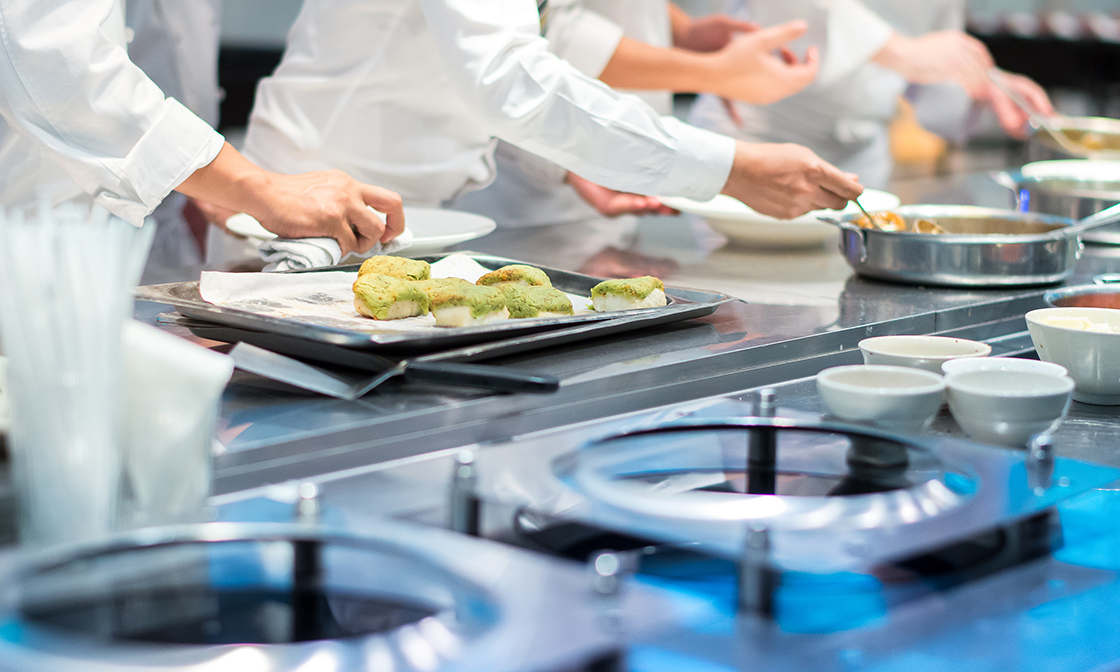A successful restaurant doesn’t just serve excellent tasting food. It focuses on great service and a clean environment to keep guests satisfied. In fact, various studies have shown that cleanliness, in particular tableware, interiors, food prep areas and public restrooms, is one of the top considerations for guests when determining where to eat. And cleanliness has an even stronger impact on whether patrons will visit your business – 75 percent of Americans said in a 2016 Harris Poll that they would not consider visiting a restaurant that had negative online reviews about its cleanliness. Taking that into account, cleaning is not just a cost, but a critical revenue factor. Restaurant owners and managers can ensure their facility is in top shape by following four simple rules.
1. Choose the right products and tools, and use them properly
Effective surface cleaning and sanitization reduces the chance of cross-contamination during food processing, preparation, storage and service. However, restaurants must use products and tools that will deliver superior cleaning results, such as chlorine and quat-based sanitizers, degreasers and other surface cleaners.
Suma® Final Step® 1024 is a concentrated, no-rinse sanitizer for food contact surfaces. This product is designed for use in food preparation & storage areas, three-sinks, bars and institutions where sanitation is of prime importance.
Space-saving dispensing systems that provide dilution control offer numerous benefits. They ensure the proper concentration of chemicals for the best cleaning results and eliminate guesswork, overuse of chemicals and unnecessary waste.
Diversey’s J-Fill® is the largest chemical dispensing platform in the industry, offering more than 40 products to clean virtually any surface. The innovative J-Fill packaging is more reliable, more accurate, more sustainable, and safer than any other dispensing platform. The J-Fill® platform can be used to dispense ready-to-use solution into spray bottles, buckets, autoscrubbers, and sinks.
Employees must also be mindful of the temperature that chemical sanitizers work best at and the contact time that is required to kill harmful microorganisms. An effective product with a lower contact time can help improve productivity and compliance with cleaning and sanitization.
2. Create and follow a schedule for surface cleaning
An easy-to-follow cleaning and sanitizing schedule for food contact surfaces helps employees keep track of key tasks and can help spot weaknesses and rectify them so that proper food standards are maintained. These surfaces include any equipment surface or utensil which food may touch during the food production process. It’s also important to clean food preparation areas where accidental draining, dripping and splashing can occur, such as within a microwave.
3. Reinforce practices with training
Incidences of foodborne illness are usually the result of noncompliance with the proper procedures. Training ensures every foodservice team member knows what constitutes a food contact surface, and understands the proper processes and products to both clean and sanitize.
Online training is an effective tool for standardizing education within a facility and across multiple restaurant locations. It also allows managers to keep track of employees’ test results and identify areas for improvement on an individual basis. Employees should undergo training when they are first hired and periodically throughout the year, as risks and responsibilities change over time.
4. Drive continuous improvement
Audits and inspections are a tool for recognizing accomplishments and strengths and help restaurants drive continuous improvement by identifying trends and concerns. Web-based systems can collect, analyze and report secure data and results from inspections almost instantly, from any place and in all major languages. This data provides better visibility of performance across all or just one site in order to maintain consistent standards of hygiene and safety.
Every restaurant operator wants a spotless record when it comes to foodborne illness. Keeping kitchen and dining environments clean not only increases safety but encourages customers to return again and again. Choosing the right products and tools, developing proper procedures, implementing effective training protocols, and driving continuous improvement are key elements to any successful foodservice operation.



